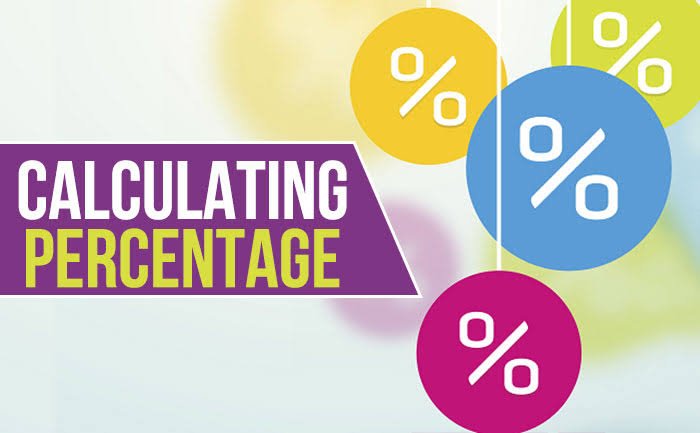A percentage is a vital concept for many everyday situations. For example, if you want to know what percentage of your take-home pay goes toward housing costs or whether you can buy a house with the savings in your bank account and maintain other essential expenses on top of that amount each month.
Businesses and organizations often use percentage calculations. For example, they may calculate the amount of taxes to be paid or a salary increase over an employee’s current pay rate. These are problems that can be solved by calculating percentages using a percentage calculator.
This article will explain everything you need to know about calculating percentages using a percentage calculator.
Table of Contents
What Is Percentage?
The term ”percent” comes from the Latin per centum, meaning “by the hundred.” In mathematics, percentages are used like fractions and decimals—they describe parts of a whole.
The symbol % is used to denote a percentage. Occasionally, the abbreviation ”pct” may be used instead.
How to calculate percentages using a Percentage Calculator
The following equation is a common formula for calculating a percentage:
Percent (%) = (Value/Total Value) × 100
Three steps in calculating a percentage
- You Must First Find Out The Total Amount.
For example, if you want to calculate the percentage of red cars in your yard, you would use the number of
cars(100) as the total amount. For this calculation, you want to evaluate the number of red cars out of 100.
- Divide The Number To Calculate A Percentage.
Using the example above, you determined you have 20 red cars out of 100 cars in your yard. Divide 20 by 100, which equals 0.2.
20/100=0.2
- Multiply The Dividend Value By 100
In this example, you multiply 0.2 by 100, which gives you the answer of 20%. This means that there are 20% red cars in your yard. The same equation can be used to calculate any percentage. You have to replace the values for each variable with the appropriate number.
Other Percentage Calculations
- Percentage Increase
Percentage increase refers to the rate at which a value is growing. To reach this number, you would need to find the difference between the original value and the final value, subtracting to find the total of the decrease. When you find that number, you need to calculate the percentage of change.
The percent increase formula can be used to determine how much the price of a product or item has increased. For example, let’s say you buy a gallon of milk for $2.50, but the price increases to $3.00 the next week. If you want to know how much the price has risen, you can use the formula below:
Percentage Increase= (New Value-Original value)/Original value × 100
For this example, the formula would look like this: Percentage Increase= (3.00-2.50)/2.50× 100= 0.5/2.50× 100=0.2 or 20%
- Percentage Decrease
The percentage decrease is the amount an asset’s value decreased, expressed as a certain portion of 100.
Percentage Decrease= (starting value-Decreased Value)/Original Value × 100
For example, if a baker spent $1,000 on power last month but only $800 this month, the electricity bill has been reduced by $200. When you express the decrease as a percentage, you find out the business experienced a decrease of 20% in its expenses on power.
Summary
You’ll see numbers expressed as percentages everywhere you look—from stores to the internet and in advertisements. Understanding what these numbers mean will save you time and money.

